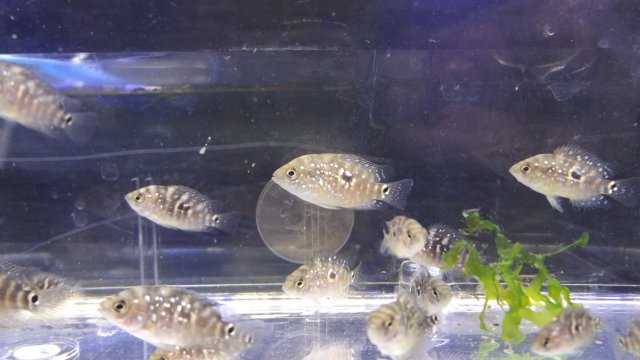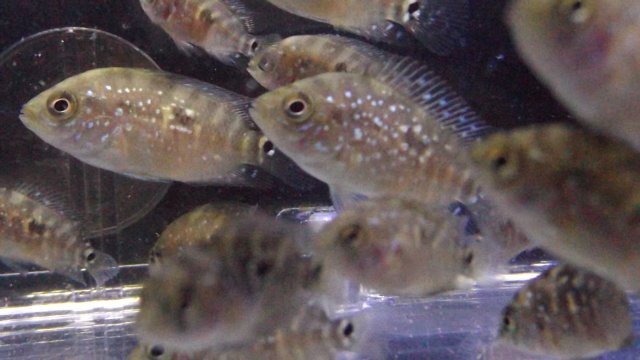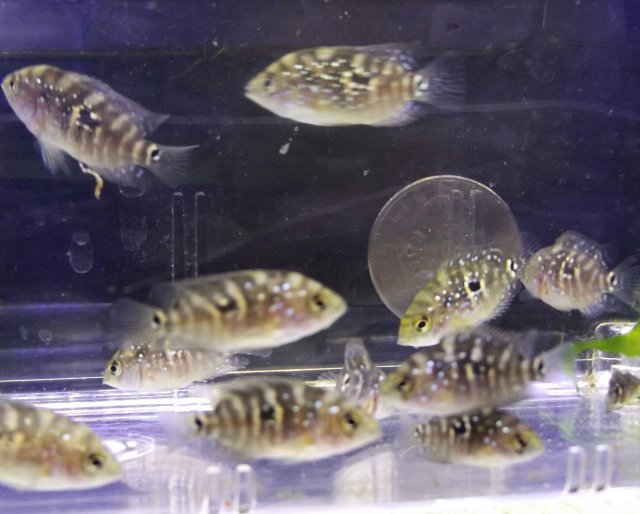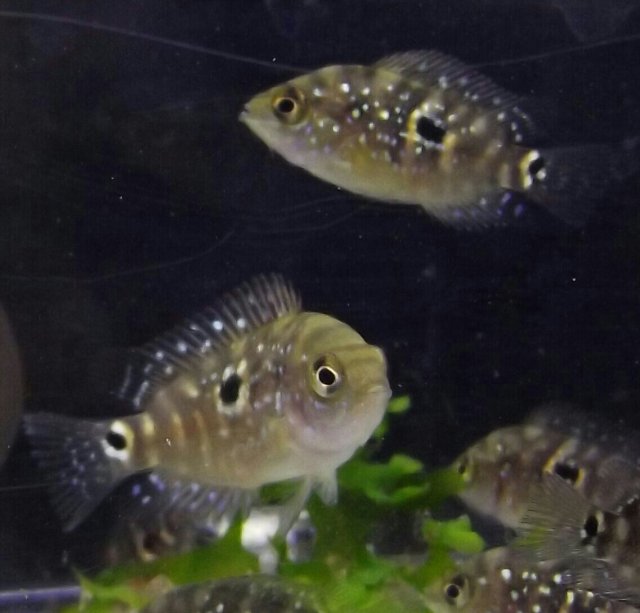EBJD Pair
- Thread starter ShadowP
- Start date
They can't... You breed these to your EBJD for strong EB infusion into your EBJD bloodline and get 50% EB and 50% BG or inbreed to each other (not recommended) for 25% EB, 50% BG, and 25% WT...Do you reckon pride and Cleopatra will throw out any EBs this spawn?, I got no idea how the whole ebjd thing works.
or simply buy them for their beauty instead of some standard color morph currently available.
Back to your question...
It's quite simple actually. I label slightly differently than most.
Standard Acronym ~ Definition ~ My Label:
EBJD ~ Electric Blue Jack Dempsey ~ EBJD
BGJD ~ Blue Gene Jack Dempsey ~ ebJD
WTJD ~ Wild Type Jack Dempsey ~ WTJD
The difference is simple... my label states what recessive trait the Dempsey is carrying, whereas BGJD means the fish has the electric blue recessive trait and doesn't show it. But the truth can go against this basic definition.
The color/pattern chromosomes donated by each parent (if strong enough) can cause a visble marker to appear on the fish carrying the recessive trait. That's what all the excitement is about over these fry. They're showing the electric blue color scattered all over their bodies and fins and not just that... they're showing these color markers at an extremely early stage of growth. 7 weeks to be exact, when a regular Jack doesn't even start to show its first spagles until around 10 - 12 weeks. A regular jack dempsey juvenile is brown with black banding until around 12 weeks old and remains various shades of brown with varying shades of darker banding for quite some time afterwards as the irridescent spangles take over.
The fry from Pride and Cleopatra were never brown with black banding. They were light grey-blue with darker blue-grey banding (if they even had bands at all - some were uniformly grey-blue). This from what I've found is unheard of and part of the reason for the excitement. Everyone following this thread (especially me!) wants to know what these fish will look like as adults! They're already beautiful!
Now, back to my labeling quickly:
Electric Blue is not the only recessive trait a JD can carry. Pure scarlet eyes is also recessive.
My method would then go something like this:
EBseJD ~ Electric Blue displayed, gene for scarlet eye carried (not displayed).
In order for this to occur ---> EBSEJD, both parents would have to contribute the electric blue gene and both parents would have to contribute the scarlet eye gene. This combination of dual recessives would only show up in 1 out of 16 offspring if each parent was blue gene recessive carryer but not full EB. and 1 out of 8 if both carry the scarlet recessive, and one is full EB.
Its actually quite simple to do, but tedious.
The 1st step is to know and categorize the possibilities.
The 2nd is to look for the desired possibilities in the offspring.
The 3rd is to use those displaying the desired traits as your breeding stock, out breed to strengthen the gene pool, then cross breed back to the trait carriers to better "lock it in" without deformities overall.
The commercial breeders (those chasing the $$$ without care)(corporate and individual) have been skipping this extremely important outbreed/inbreed step (it takes 2 additional generations and easily over a year, just to do it once).
The result... rampant deformities:
big bulgy eyes
sunken or concave throat area
massive knotty foreheads
twisted deformed mouths
sunken cheeks just in front of the gills
Non symmetrical or oddly shaped bodies
poor finnage
lousy overall color
lousy overall pattern.
ANY COMBINATION OF THE ABOVE.
And unfortunately, this is what we have been seeing in the marketplace.
I've been flat out told by a local LFS owner, to keep only the BGJD I need for mates for my EBJD and to destroy the rest!
Sorry SIMPLY PETS... I'm doing it my way!!!
I've been told to destroy the females too, since they don't get as big as fast, and are therefore (marketwise) less desireable.
Sorry again!!! I'm gonna do it my way and make them available, grouped with the males best as can be statistically calculated according to early growth rates. You might get 2 lg male, 1 sm male and a female...
You might get 2 lg male, one lg female and a small female
etc.
The overwhelming majority of the larger are male, the overwhelming majority of the smaller, are female.
And who knows? The perfectly formed smaller specimens might even be carrying the recessive genes for dwarfism.
Wouldn't it be great to start a bloodline of Dwarf JD with all that color and attitude and be able to house several pair of them in a 25 or 30 gallon?
Corporate has been killing all the small ones! Until private sector does it, it'll never happen.
Keep your damned balloon this, and balloon that fishes!
I want graceful, beautifully elegant fish that don't wobble from one end of the tank to the other.
And if they have color! and personalities! too... THAT'S FOR ME!!!
Last edited:
T
thanks for clearing that up for me mate. Much appreciated, as I said I got no idea lol.They can't... You breed these to your EBJD for strong EB infusion into your EBJD bloodline and get 50% EB and 50% BG or inbreed to each other (not recommended) for 25% EB, 50% BG, and 25% WT...
or simply buy them for their beauty instead of some standard color morph currently available.
Back to your question...
It's quite simple actually. I label slightly differently than most.
Standard Acronym ~ Definition ~ My Label:
EBJD ~ Electric Blue Jack Dempsey ~ EBJD
BGJD ~ Blue Gene Jack Dempsey ~ ebJD
WTJD ~ Wild Type Jack Dempsey ~ WTJD
The difference is simple... my label states what recessive trait the Dempsey is carrying, whereas BGJD means the fish has the electric blue recessive trait and doesn't show it. But the truth can go against this basic definition.
The color/pattern chromosomes donated by each parent (if strong enough) can cause a visble marker to appear on the fish carrying the recessive trait. That's what all the excitement is about over these fry. They're showing the electric blue color scattered all over their bodies and fins and not just that... they're showing these color markers at an extremely early stage of growth. 7 weeks to be exact, when a regular Jack doesn't even start to show its first spagles until around 10 - 12 weeks. A regular jack dempsey juvenile is brown with black banding until around 12 weeks old and remains various shades of brown with varying shades of darker banding for quite some time afterwards as the irridescent spangles take over.
The fry from Pride and Cleopatra were never brown with black banding. They were light grey-blue with darker blue-grey banding (if they even had bands at all - some were uniformly grey-blue). This from what I've found is unheard of and part of the reason for the excitement. Everyone following this thread (especially me!) wants to know what these fish will look like as adults! They're already beautiful!
Now, back to my labeling quickly:
Electric Blue is not the only recessive trait a JD can carry. Pure scarlet eyes is also recessive.
My method would then go something like this:
EBseJD ~ Electric Blue displayed, gene for scarlet eye carried (not displayed).
In order for this to occur ---> EBSEJD, both parents would have to contribute the electric blue gene and both parents would have to contribute the scarlet eye gene. This combination of dual recessives would only show up in 1 out of 16 offspring if each parent was blue gene recessive carryer but not full EB. and 1 out of 8 if both carry the scarlet recessive, and one is full EB.
Its actually quite simple to do, but tedious.
The 1st step is to know and categorize the possibilities.
The 2nd is to look for the desired possibilities in the offspring.
The 3rd is to use those displaying the desired traits as your breeding stock, out breed to strengthen the gene pool, then cross breed back to the trait carriers to better "lock it in" without deformities overall.
The commercial breeders (those chasing the $$$ without care)(corporate and individual) have been skipping this extremely important outbreed/inbreed step (it takes 2 additional generations and easily over a year, just to do it once).
The result... rampant deformities:
big bulgy eyes
sunken or concave throat area
massive knotty foreheads
twisted deformed mouths
sunken cheeks just in front of the gills
Non symmetrical or oddly shaped bodies
poor finnage
lousy overall color
lousy overall pattern.
ANY COMBINATION OF THE ABOVE.
And unfortunately, this is what we have been seeing in the marketplace.
I've been flat out told by a local LFS owner, to keep only the BGJD I need for mates for my EBJD and to destroy the rest!
Sorry SIMPLY PETS... I'm doing it my way!!!
I've been told to destroy the females too, since they don't get as big as fast, and are therefore (marketwise) less desireable.
Sorry again!!! I'm gonna do it my way and make them available, grouped with the males best as can be statistically calculated according to early growth rates. You might get 2 lg male, 1 sm male and a female...
You might get 2 lg male, one lg female and a small female
etc.
The overwhelming majority of the larger are male, the overwhelming majority of the smaller, are female.
And who knows? The perfectly formed smaller specimens might even be carrying the recessive genes for dwarfism.
Wouldn't it be great to start a bloodline of Dwarf JD with all that color and attitude and be able to house several pair of them in a 25 or 30 gallon?
Corporate has been killing all the small ones! Until private sector does it, it'll never happen.
Keep your damned balloon this, and balloon that fishes!
I want graceful, beautifully elegant fish that don't wobble from one end of the tank to the other.
And if they have color! and personalities! too... THAT'S FOR ME!!!
LOL means Learning-O-Lot!...T
thanks for clearing that up for me mate. Much appreciated, as I said I got no idea lol.
No prob... glad could help.
Now at 12 weeks and a day, and me much better with the new camera! Hope you now understand why I've been so excited about them.
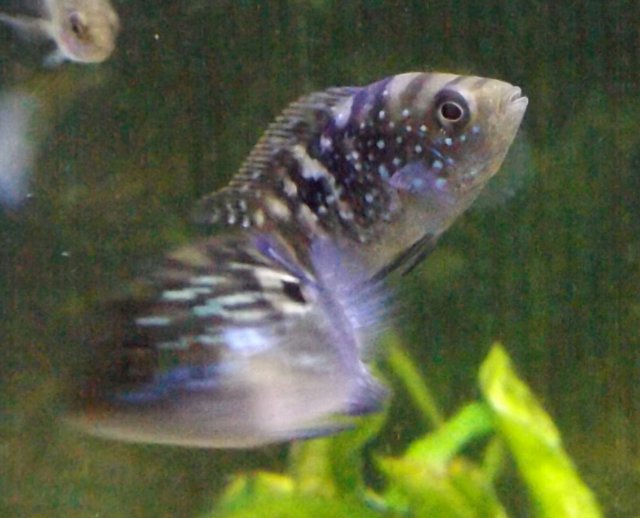
They were both side by side when I snapped this one.
I have an easier time taking a clearer picture of the moon (without a tripod!).
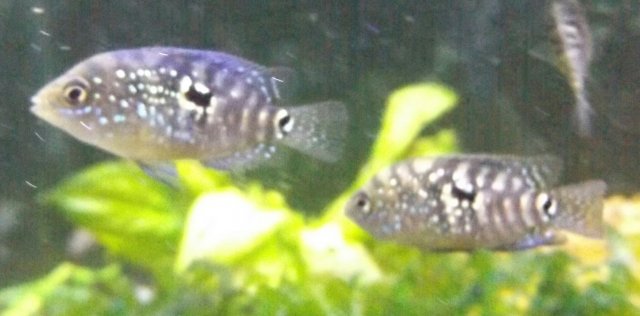
Note: irregular barring patterns...
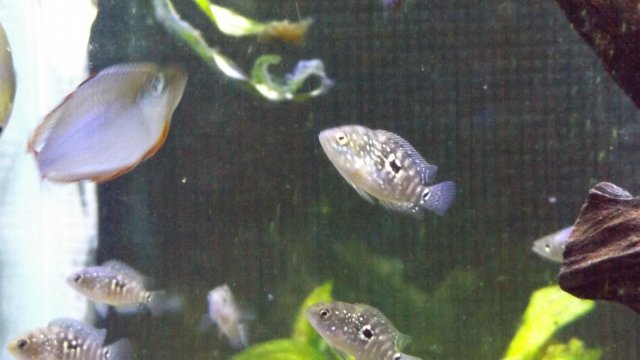
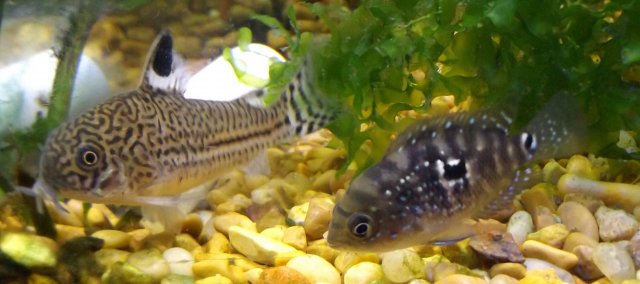
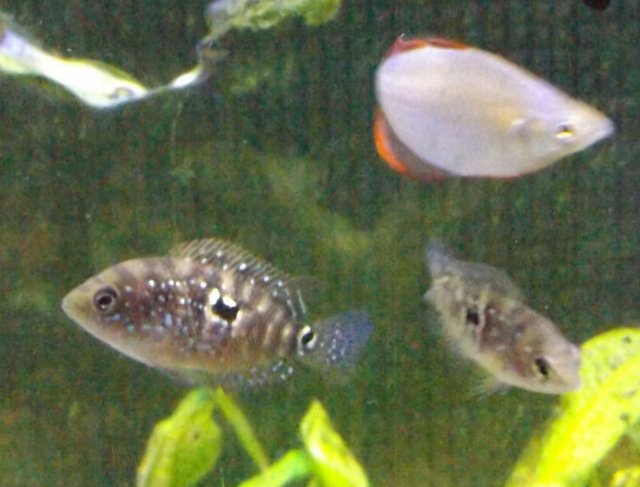
Color washed out a bit, but for comparison sake... that dwarf neon blue rainbow is a male in full color... ought to be... he helped eat over 600 fry!!!
Ok!?! Who hid the "crying" emoticon?

They were both side by side when I snapped this one.
I have an easier time taking a clearer picture of the moon (without a tripod!).

Note: irregular barring patterns...



Color washed out a bit, but for comparison sake... that dwarf neon blue rainbow is a male in full color... ought to be... he helped eat over 600 fry!!!
Ok!?! Who hid the "crying" emoticon?
Easy fix! Just keep the red light onI would totally take some from you but I have no room ='( Looking great!
There's no dislike button =S but ya, no more red light! Though in the future I think I'd enjoy JD/EBJD breeding. We can trade fry to make a stronger gene pool!Easy fix! Just keep the red light on


